Bruijn (13)
Cornelis de Bruijn (c.1652-1727) was a Dutch artist and traveler. He is best known for his drawings of the ruins of Persepolis, the first reliable pictures of these palaces to be accessible for western scholars. His other visits included the Ottoman Empire, Egypt, Jerusalem, Russia, and the East Indies.
Final Years
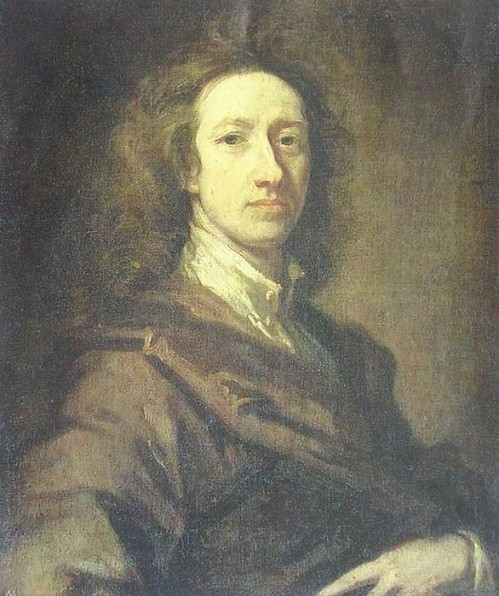
During the next years, De Bruijn lived on several places in Holland. In 1709-1710, he had a cabinet in a house in the Hartenstraat in Amsterdam, where he received his benefactor Nicolaes Witsen and Gisbert Cuper, the man who had allowed him to copy a painting of Palmyra. Cuper and De Bruijn later exchanged letters about the cuneiform script from Persepolis. The artist is also known to have lived on the Prinsengracht, one of Amsterdam's famous canals, in 1711; in 1712, he lived just outside Haarlem.
De Bruijn was now preparing his second book and masterpiece: Reizen over Moskovie, door Persie en Indie (Travels into Moscovy, Persia, and the East Indies; 1711). The book is dedicated a German nobleman from Frankfurt named Zacharias Conrad von Uffenbach (1683-1734), which is a bit surprising: Nicolaes Witsen had done a lot for De Bruijn, and was known to appreciate book dedications.
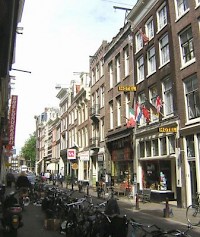
The Travels are a splendid book, and a lot more ambitious than De Bruijn's first publication. It has 482 pages and 300 illustrations, including several fold-outs. The drawings were excellent: in fact, until the first photographers visited Persepolis in the twentieth century, De Bruijn's pictures were among the best that were available. Confident that this book would be an even bigger success than his first publication, the artist ordered 1000 copies to be printed.
The book should have been a success, but it wasn't. Although the reviews in the Acta eruditorum and Journal des Sçavans were again favorable, only 240 copies were sold in three years. One reason was the war. The Dutch had not been able to interfere in the Great Northern war and were unable to maintain their monopoly on cheap Prussian grain. The "Golden Age" of Holland was over, and the people knew. There was not much enthusiasm for an expensive book.
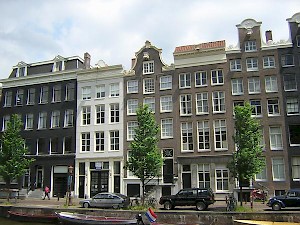
Besides, De Bruijn had competitors. Between 1664 and 1667, the French travelers Jean de Thévenot (1633-1667) and Jean Chardin (1643-1713) had done some serious research at Persepolis too. Thévenot's careless remarks had already been published in 1664 (without illustrations), but Chardin's Voyages en Perse et autres lieux de l' Oriënt, which was based on the same observations as Thévenot's book, appeared at the same time as De Bruijn's Reizen over Moskovie, door Persie en Indie. One year later, in 1712, a German physicist named Engelbert Kämpfer (1651-1716) published another account of Persepolis in his Amoenitates exoticarum. He had been in Persia in 1684-1685, and had also visited southern India, the East Indies and Japan. The three books were aimed at the same audience, and as a result, none of them sold really well. De Bruijn did not believe a French translation was possible.
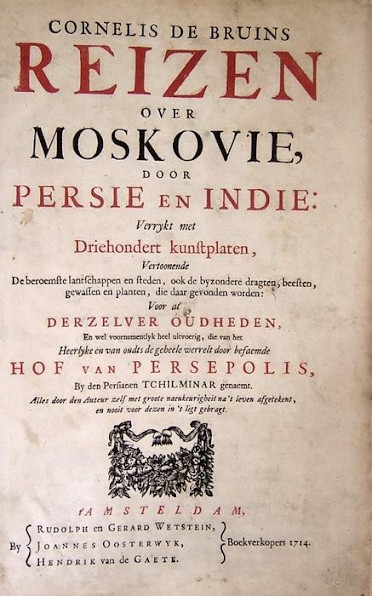
In 1713, Gisbert Cuper wrote to De Bruijn, asking him to explain why there were differences between his pictures of Persepolis and the illustrations by Chardin and Kämpfer. For De Bruijn, this was an opportunity to publish a third book, a small one this time, Aenmerkingen Over de Printverbeeldingen van de Overblijfzelen van het Oude Persepolis (Remarks about the Illustrations of the Ruins of Ancient Persepolis; 1714). De Bruijn convincingly showed how his rivals, who were not professional artists and had only briefly visited in Persepolis, had made mistakes.
From this moment on, Cornelis de Bruijn's life is hard to reconstruct, but it appears that the lack of success of his second book caused financial problems. When Nicolaes Witsen died in 1717, he owned several oriental drawings by De Bruijn, which suggests that the mayor had found a way to slip some money to the artist without the resemblance of charity. It is known that in 1714, De Bruijn left all unsold copies to a bookseller named Hendrik Wetstein, who was able to sell 468 French Travels in the Principal Parts of Asia Minor by auction. 760 copies of the Travels into Moscovy, Persia, and the East Indies were bound again and sold as a second edition; there was also a "real" second edition of lesser quality, which was soon sold out. In 1718, the book was translated into French. One wonders what would have happened if De Bruijn had been able to postpone the transfer of the unsold copy to Wetstein a few more years.
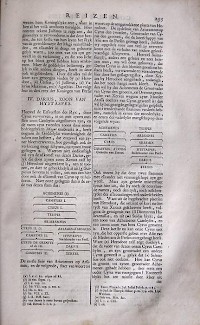
In 1719-1720, De Bruijn seems to have lived in The Hague again, because he is mentioned in the archives of the painters' academy. Unfortunately, old age was not kind to the artist. Jacob Campo Weyerman (1677-1747), one of the spokesmen of the Dutch Enlightenment, tells in a collection of biographies that the "the famous Cornelis de Bruijn lived in a small house" in a village named Vianen and "was forced to continue to spin out the thread of his life", but unfortunately "with less comfort than his age demanded". De Bruijn's final years were even worse than these words suggest. Although Vianen was in the heart of the Dutch Republic, it belonged to the German county of Lippe and was outside the jurisdiction of the Estates General. The town, therefore, became a notorious asylum for criminals and creditors. Nobody was happy with this situation, and in 1725 count Simon Heinrich Adolf zu Lippe-Detmold sold the town to Holland.
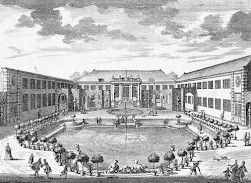
The final voyage of the 73 years old bankrupt was from Vianen to the country house of his friend David van Mollem, Zijdebalen, just north of the city of Utrecht. Here, De Bruijn spent his days until he died in 1726 or 1727. Weyerman says that Van Mollem gave the "the tired and completely exhausted traveler" the things he needed, but "charity is insufficient to give a man serenity, which is a blessing that only Heaven can give". Another biographer, Johan van Gool, tells that "at the end of his life, De Bruijn behaved so strange and intractable that his company became unpleasant".
Van Mollem's mansion was internationally famous for its garden, and it is to be hoped that the poor artist could still appreciate nature's beauty and find some comfort.